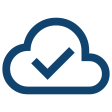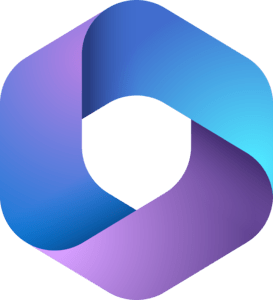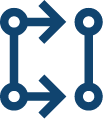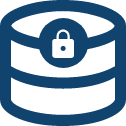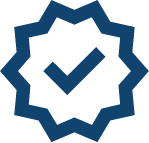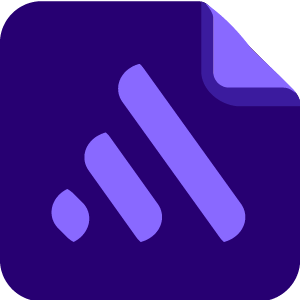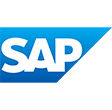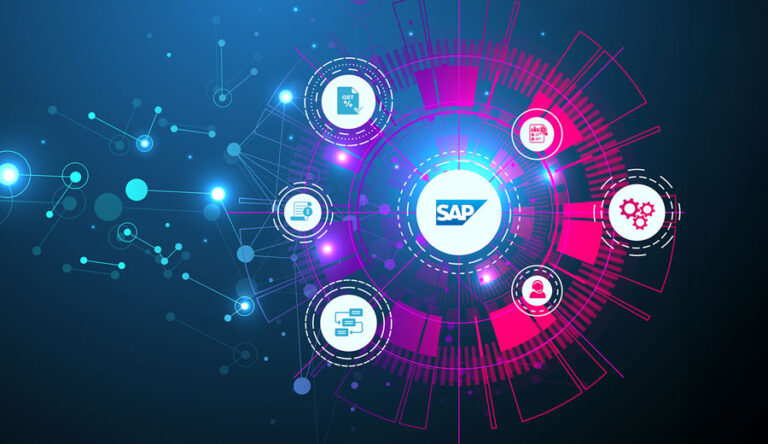Gone are the days when businesses ran their workloads on on-premises data centers. As more and more organizations move to distributed services, IT teams see traditional monitoring tools and technologies designed to monitor old monolithic application architectures as a huge challenge. Businesses are now more inclined towards incorporating new cloud powered monitoring technologies to minimize costs, improve their productivity and profitability, and find effective solutions for monitoring their resources.
A report by Gartner shows that 80% of the companies they surveyed were either completely ignorant or had significant gaps in monitoring their cloud-based solutions. So, the question arises – how do you observe the cloud and avoid the associated hazards?
Against this backdrop, in this article we:
1) What is cloud monitoring?
2) What to monitor?
3) Types of cloud monitoring functions
4) Types of clouds that can be monitored
5) Types of Cloud monitoring strategies
6) Cloud Monitoring Tools
7) Cloud monitoring best practices
What is cloud monitoring?
Cloud monitoring require automated and manual tools to monitor and operate cloud computing architecture and services. It integrates an overall cloud management approach allowing supervisors to observe the status of cloud-based sources. It helps you identify gaps and troubling patterns, so that you can prevent these issues from turning into significant problems.
In a world where companies are progressively using clouds, cloud monitoring is extremely essential for businesses. It allows companies to ensure that the cloud-based system is constantly calculating essential metrics and provide automation.
What to monitor?
In a cloud-based ecosystem, companies have a vast number of cloud services to manage. Cloud monitoring is not limited to workloads received on popular public cloud computing services such as AWS, Azure, or Google. Companies can manage SaaS (applications such as Salesforce or Office365), PaaS (Google App Engine, SAP Cloud) or IaaS (AWS EC2, Google Compute Engine).
Types of cloud monitoring functions
The cloud has various moving parts, and it is essential to ensure everything works together seamlessly to optimize performance. Cloud monitoring primarily includes functions such as:
The host can be a local computer on your network or remotely hosted by a cloud services provider. There are various metrics for website monitoring include traffic, availability, and resource usage. Other parameters have user experience, search availability, and time on page for managing a website as a business asset.
There are multiple ways this monitoring can be executed. A monitoring solution that identifies visitors might show that the “time on page” metric is low, suggesting a need for more helpful content. A rapid spike in traffic could mean a cyber-attack. Possessing this data available in real-time helps a business adjust its strategy to serve customer needs better. Let’s look into multiple cloud monitoring functions:
Website monitoring
Website monitoring is vital for providing the availability and performance of a website. Their tools are extremely useful in tracking cloud-hosted websites’ processes, traffic, availability, and resource utilization. Using these tools, businesses can identify page loading time, monitor end-user experience, and test website performance concerning different regions or devices.
Virtual machine monitoring
A virtual machine is an imitation of a computer within a computer. This is often computed in infrastructure as a Service (IaaS), where an implicit server hosts several virtual desktops for users to connect. A monitoring application can trace users, traffic, infrastructure, and the status of every machine. This proposes the benefits of traditional IT infrastructure monitoring, with the additional benefits of cloud monitoring solutions. From a management aspect, tracking employee productivity and resource allocation can be critical metrics for virtual machines.
Database monitoring
Database monitoring tools are required to track and manage database performance. It offers stable availability and accessibility. Using database monitoring tools, businesses can observe processes, perform queries, and regulate the availability and expenditure of cloud database measures on a real-time basis. The data produced by the database monitoring tools are used to assure the high availability of database infrastructure. Companies use insights gathered from database monitoring tools to determine issues before they affect application performance proactively.
Virtual network monitoring
Today, companies use virtual networks to improve their networking abilities by allowing devices to get linked virtually through various locations. Whereas physical networks, which use cables to connect devices, virtual networks build connectivity utilizing the software. However, virtual networks monitored and configured correctly, can cause performance issues.
Virtual network monitoring tools help gain a complete overview of your virtual networks and understand the key issues causing performance obstacles. With virtual network monitoring tools, companies can ensure efficient management of resources for improving connectivity and accessibility.
Cloud storage monitoring
Cloud computing monitoring tracks various analytics simultaneously. Other than that, cloud storage is frequently used to host SaaS and IaaS solutions. These applications can be configured to track performance metrics, processes, users, databases, and available storage. This data directs on features that users find helpful or to fix errors that disrupt functionality.
Businesses can examine their storage buckets and get alerts when specific thresholds are crossed with cloud storage monitoring tools. With cloud storage monitoring tools, companies can recognize performance issues proactively before they expand. These computing tools are also used to get insights into weekly or monthly storage-related trends, helpful in making informed outcomes such as forecasting and preparing for future growth.
Types of clouds that can be monitored
Cloud monitoring tools can monitor three major types of clouds: Private Clouds, Public Clouds, and Hybrid Clouds.
Private cloud monitoring
Private cloud monitoring tools allow businesses to monitor available resources concerning market and utilization. Cloud monitoring is more apparent if you work in a private cloud due to extended control and clarity since you have access to the systems and software stack. Private cloud monitoring tools are also helpful for helping businesses understand the usage of different departments. Using these tools, recorded performance can be monitored on a real-time basis to analyze and resolve performance issues.
Public cloud monitoring
With public cloud monitoring tools, businesses can monitor their workloads across all the extensive public cloud platforms. This involves estimating real-time performance and tracking the availability of virtual machines and their networks used by the cloud service provider. Public cloud monitoring tools also help companies use best practices with standard configurations to assure compliance and security.
Hybrid cloud monitoring
Observing a hybrid cloud environment presents more difficulties than monitoring a private cloud since your data resides in both private and public clouds. Where these tools can play a significant role, hybrid cloud monitoring tools can help businesses trace or find out the root cause of any issue. Hybrid cloud monitoring tools also help enterprises analyze how every component of the cloud ecosystem (applications, networks, databases) is performing.
Types of Cloud monitoring strategies
Ensure that a cloud monitoring approach doesn’t just resolve problems. It also highlights what goes well, so you only pay attention to things that need improvement. Greater visibility and a data-driven approach can perform the below advantages:
- Better performance: Raw metrics and organized infographics can provide more specific pictures of a system’s performance, especially in a loaded environment. Knowledge about resource usage and how application demand causes strain can help the company optimize their distributions.
- Better cohesiveness: Cloud monitoring tools often pool readable data or charts into an integrated location. Whereas this data was once separated between units, new databases can provide business value to all groups with one data set.
- Topographical understanding: Observability into a framework’s unique layout helps teams recognize how components are organized. This information makes it much easier to navigate the ecosystem during management tasks.
- Better security: User activity logs help administration tighten unauthorized access. Teams can measure the impact of traffic to know the potential severity of a DDoS attack. They also can automatically scan records and resources to limit malware or other difficulties from gaining a foothold.
A cloud monitoring process drives its benefits from the concept of virtualization to identify various critical challenges such as delayed responses and others. Most cloud functions are executed as software in a virtual environment. Cloud monitoring functions, including application, resource management, and security, naturally become part of this situation.
Cloud Monitoring Tools
Several types of monitoring tools can help you gain extended observability into the cloud infrastructure, applications, and website performance. Some provide you with just one perspective of monitoring, whereas others give you complete visibility into all the key performance indicators, metrics, logs, traces, etc. Here is a list of cloud monitoring tools:
- Amazon CloudWatch
- Oracle Application Performance Monitoring
- Graphite
- Azure Monitor
- Google Operations
- CloudMonix
- Sematext Cloud
- Dynatrace
Cloud monitoring best practices
Keeping a productive cloud environment is never an easy task. Based on our research, we advise some of the best practices that companies must follow:
Audit the end-user experience
Offering a reliable, seamless, and engaging user experience should be the goal of every business. Monitoring end-user experience gives you essential insights into customer satisfaction and can directly lead to increased revenue.
To effectively monitor user experience, you need an advanced monitoring platform that can monitor the response time data and feed it back on the system as familiar, observable data. With uniform metrics, flow, and data, the experts can set alerts and act quickly if an issue occurs. Businesses can also monitor metrics such as response times and frequency of use to get an entire picture of performance.
Manage cloud and on-premises infrastructure from a single platform
Businesses monitor the performance of their on-premises infrastructure to provide desired results. Whereas with the introduction of the cloud infrastructure, a new problem appears — they now have two systems to monitor. Organizing the data from both systems can seem challenging, but companies should aim for that level of Unification.
A single platform that measures both cloud and on-premises infrastructure performance can extend third-party data from cloud services such as AWS and offers a real-time overview of all crucial cloud performance KPIs. KPIs you should monitor include:
- Cost
- Security
- Performance
- Data Backup/Recovery
The single platform enables businesses to have full visibility into all the elements of the networks and applications, whether they are available on premises or on the cloud.
Monitor cloud usage and fees
Businesses get benefited from the performance of the cloud to measure data and infrastructure effectively. With extended usage can lead to raised costs if not appropriately monitored. Cloud monitoring tools can help in efficiently estimating the resources utilized while assuring that the prices are under control.
Automate tasks
For all cloud environments, automation is a crucial practice. It allows businesses to be more effective while securing compliance, security and updating software. It also minimizes the chance of errors significantly.
Monitor security
Security is essential in the cloud, so obtaining strict control over data at all endpoints helps moderate risks. Solutions that scan, examine, and act on data before leaving the network help to defend against data loss. It’s also necessary to scan, estimate, and classify data before downloading it to the network. With an increase in the adoption of the cloud, issues concerning cloud security have gone up automatically. Other common threats that emerge due to poor cloud security are data breaches, attacks on accounts, malware injections, weak APIs, and shared vulnerabilities.
Cloud monitoring tools can play a significant role in assuring security. From configuring to enforcing security measures, cloud monitoring and management tools can provide secure access. Cloud monitoring tools are also helpful in enhancing your cloud’s security posture by allowing complete visibility into issues such as misconfigurations, old security policies, and violations concerning compliance.
Conclusion
In summary, businesses using various metrics and methodologies to perform cloud monitoring try to ensure that systems provide benchmark access levels and desired outcomes. Like other systems, the cloud also needs to be monitored to get effective and expected results.
If you have any questions about adopting the cloud infrastructure for your business. Want to optimize your cloud performance, reduce costs using cloud monitoring tools, contact us today to help you with your performance and security needs. Embee helps your businesses with cloud monitoring solutions that instantly manage critical data and workloads to ensure business continuity. We offer managed solutions establishing a high-powered, scalable and secure development and deployment environment on the cloud.
